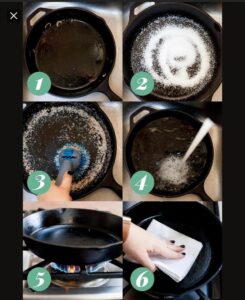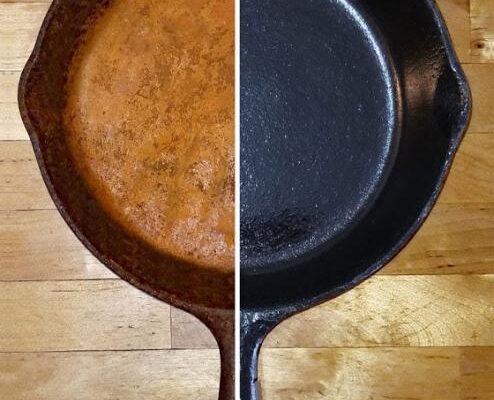Restoring an old rusted iron involves several steps to clean, remove rust, and restore its functionality or aesthetic appeal. Here’s a step-by-step guide:
Materials Needed:
- White vinegar or lemon juice
- Baking soda
- Steel wool or wire brush
- Phosphoric acid (for severe rust)
- Sandpaper (fine and medium grit)
- Metal polish
- Protective gloves and goggles
- Cloth or rag
- Rust-inhibiting primer (optional)
- Spray paint (optional, for aesthetic restoration)
Step-by-Step Instructions:
1. Assess the Rust Damage
- Check if the rust has caused structural damage. Surface rust can be removed easily, but severe corrosion that has weakened the metal may require professional restoration.
2. Clean the Iron
- Wipe off any dust, dirt, or grease using a damp cloth. This will help you see the extent of the rust and ensure that your rust remover can penetrate properly.
3. Soak the Iron in Vinegar or Lemon Juice
- Submerge the rusted part of the iron in white vinegar or apply lemon juice directly on the rust. These acidic solutions help to loosen the rust. Let it sit for several hours or overnight for heavy rust. If the iron is too large to submerge, soak a cloth in vinegar or lemon juice and wrap it around the rusted area.
4. Scrub the Rust
- After soaking, use steel wool, a wire brush, or a scrub pad to scrub away the loosened rust. Apply pressure in a circular motion, focusing on the most affected areas.
- For hard-to-reach areas, use a toothbrush or fine steel wool.
5. Use Baking Soda Paste for Light Rust
- If there’s still light rust remaining, create a paste with baking soda and water. Apply the paste to the rusted areas and scrub again with steel wool or a brush.
6. Apply Phosphoric Acid for Stubborn Rust
- If scrubbing and soaking haven’t fully removed the rust, apply a phosphoric acid-based rust converter or remover to the remaining rust. Follow the manufacturer’s instructions, then scrub again after the rust turns dark or dissolves.
7. Sand the Surface
- Use medium-grit sandpaper (around 120 grit) to sand the iron. This helps to smooth the surface and remove any remaining traces of rust. Follow up with fine-grit sandpaper (around 220 grit) to polish the surface.
8. Wipe Down the Iron
- After sanding, wipe the iron clean with a damp cloth to remove any dust and residue from the sanding process.
9. Polish the Metal
- Use a metal polish to restore the shine and protect the metal. Apply it using a soft cloth, following the instructions on the product. Buff the surface until it shines.
10. Apply a Rust Inhibitor or Paint (Optional)
- If the iron is decorative or exposed to moisture, apply a rust-inhibiting primer and, if desired, a coat of spray paint to protect it from future rusting.
- For a vintage or antique look, you might want to keep the iron’s patina, so consider a clear protective coating instead of paint.
11. Regular Maintenance
- After restoration, regularly clean and dry the iron to prevent new rust from forming. Consider applying a thin layer of oil or wax to protect the surface.

Additional Tips:
- For Electrical Irons: If the iron is electrical, avoid soaking it in liquids. Instead, focus on cleaning the metal surface using rust removers and scrubbing. Be careful around the heating element and electrical components, as water exposure can cause damage.
- For Antique or Vintage Irons: If the iron is a collector’s item, consult with an expert to avoid devaluing it through over-restoration or using inappropriate methods.



